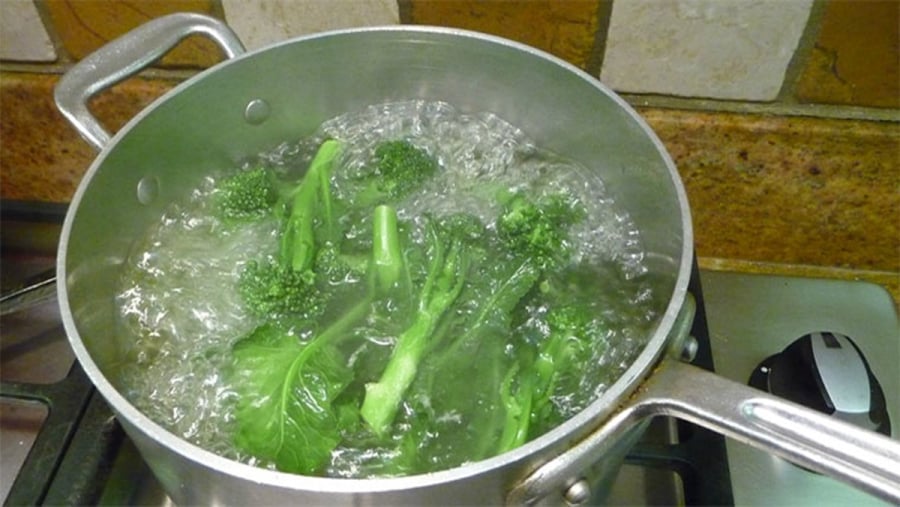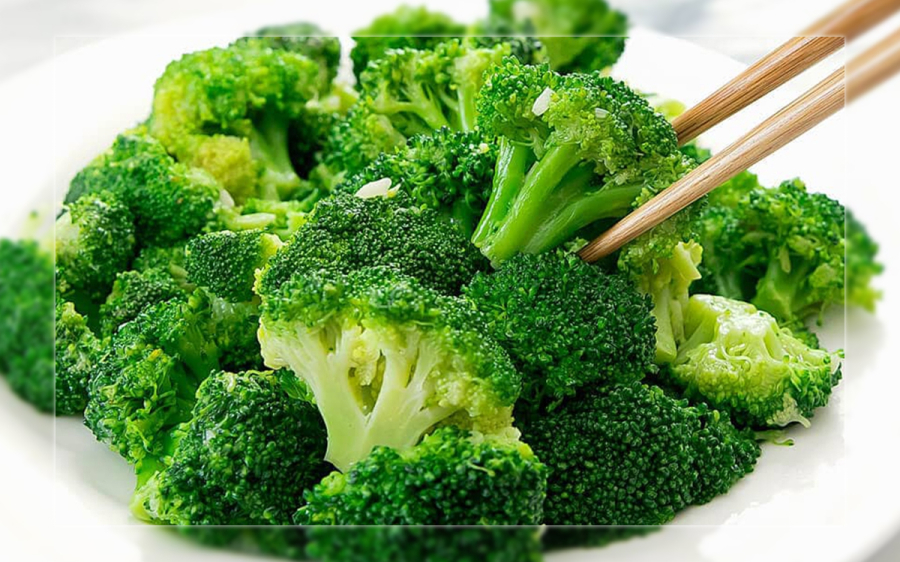Blanching vegetables: What are the advantages and disadvantages of covering the pot?
We all know that vegetables contain a large amount of organic acids, some of which can be harmful to human health. Particularly, these harmful substances can vaporize during the blanching process. Moreover, when blanching vegetables, some types might have been sprayed with unsafe pesticides or growth enhancers. Therefore, covering the pot during blanching helps eliminate harmful toxins and chemicals from the vegetables.
Additionally, covering the pot while blanching helps preserve the natural magnesium content and chlorophyll, giving the blanched vegetables an appealing, vibrant green color. However, covering the pot may prolong the cooking time and result in the loss of certain nutrients and vitamins in the vegetables.
Blanching vegetables while covering the pot: Advantages and disadvantages
When blanching vegetables and covering the pot, the vitamin content and nutritional elements of the vegetables will not be lost. Additionally, covering the pot helps retain harmful substances that could affect health. Hence, the ideal and safe method for blanching vegetables is to cover the pot.

Best way to blanch vegetables for a vibrant, tempting appearance
Method:
Firstly, it’s crucial to note that the retention of nutrients in the vegetables depends on their preparation and cleaning process before cooking. By doing so, your vegetables will be free of chemicals and more nutritious.
Next, avoid soaking the vegetables in water for too long and ensure to wash them thoroughly before slicing. This helps retain the nutrients, preventing them from leaching into the water.
Bring a pot of water to a boil, add a pinch of salt, and the vegetables. Allow the pot to remain uncovered during this process. Once the vegetables are cooked to your desired texture, remove them promptly. Do not overcook the vegetables as this will result in a loss of their natural crispiness and nutritional content.

After cooking, consume the vegetables immediately. Avoid blanching them far in advance, as this may decrease their nutritional value. Also, refrain from washing and cutting the vegetables too early before blanching, as this can lead to a loss of vitamins.
Moreover, when blanching root vegetables, using high heat is preferred to prevent them from turning yellow or dark, ensuring a more attractive appearance.












